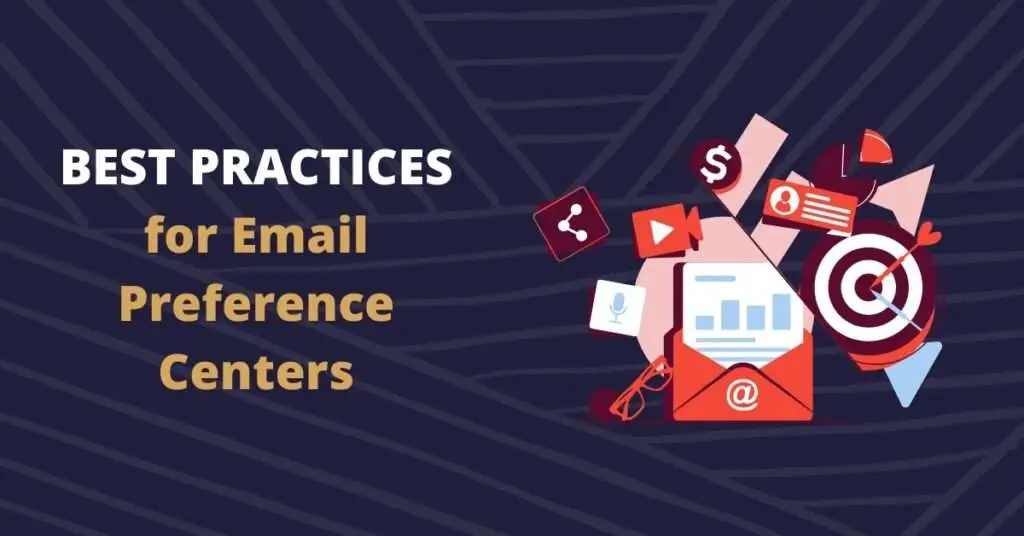
Marketing emails unfortunately come with a negative reputation. Consumers often complain about receiving too many, too often. But with the immense advertising potential (not to mention ROI) that email marketing tends to bring, it’s not a method most companies can afford to ignore or significantly scale back. So, how do you get your contacts to actually be happy to receive a marketing email from you?
One way is to give the consumers control over the emails they receive. This is best accomplished with an email preference center, a webpage that allows email subscribers to control their preferences and experience with your organization. This allows consumers to pick the topics they are interested in without unsubscribing entirely.
In today’s article, we’ll look at the four essential parts of building a preference center and how you can give your customers a positive experience.
Step 1: Planning
Before construction begins, you need to know exactly how you’ll use it, its scope, and the data required to build it. You’ll also need to develop an easily readable form design that streamlines the process. And of course, you must comply with data privacy laws as you manage your customers’ preferences.
We recommend getting expert input for this stage, including:
- Consulting with your data privacy officer and legal team
- Research preference center ideas and best practices by observing companies you admire, Your call, and even your competitors
- Consulting with a customer behavior analyst to see what content and frequency options will be most popular
- Having team members look over your proposed design to ensure it’s easy to understand
Step 2: Consent
This step comes straight from the privacy compliance consultation earlier. Collecting customer consent to continue marketing to them is important for an email preference center.
You’ll want to ensure that your preference center:
- Uses an opt-in consent system rather than pre-selected opt-in to make customizing preferences easier for the user
- Requires that the user confirm they have read and accepted the terms of use and your privacy policy before submitting the completed form
- Explains openly and honestly how your business collects and uses all customer data, including any information you are legally required to disclose
Step 3: Design & Implementation
Now, the designing and implementation phase begins. The designing stage is easy. Your preference center should obviously have the same branding as your business (or, if necessary, any brands you work with). The entire page should be easily scannable and understandable. Users should be able to access the page from mobile devices as easily as from computers. And of course, you’ll want to use colors and layout schemes that make the whole page aesthetically pleasing.
The details of implementation can get tricky, however, especially when it comes to data collection. As you structure your page, keep these general rules in mind:
- Don’t request excessive amounts of personal data, particularly very intimate data that most people are reluctant to share.
- Use your best judgment to decide what data is required for your business and content offerings.
- Make sure the data you request is age-appropriate.
- Allow customers to choose their preferred form of communication (i.e., text messaging over emails) and ensure your system can support their choice.
Once your data collection rules are in place, you can move on to more detailed page construction. Remember: the aim of this page is to convince your contacts to agree to as many personalized emails as possible. Highlight the advantages of more personalized marketing communications to them to encourage them to share more information and sign up for more frequent contact. Allow your contacts to specify how often they want to receive messages from you. Give them the freedom to decide how they want to hear from you: via a text message, through an email, or something else if your system supports it. (We also suggest including thumbnail previews of your communications so your customers can recognize messages from you.) Finally, you’ll want to ensure that your preference center displays in your contact’s language (if they have the option to choose one), and that the page can identify and filter out fake email addresses.
Once the user has filled out the form and clicked submit, send them a welcome email outlining their preferences and explaining how they can update this information whenever they want. They’ll be happy to have control over their choices. And you’ll be happy to have a potential long-term lead.
Step 4: Unsubscribing
Of course, customers will want to unsubscribe periodically. In this case, the best thing you can do is make unsubscribing as simple as possible.
In each email, include a link to update their communication preferences. When someone clicks unsubscribe, send them to your preference center and prompt them to adjust the type of information they want to receive. For those who want to unsubscribe entirely, make the process simple. You can also offer a “snooze” button that allows subscribers to pause communications for a specified period of time. Just make sure to follow up with a “Welcome back” email when the time comes and get confirmation that they want to hear from you again.
Conclusion
Effective customer communication starts by giving your contacts a degree of control. Customers will feel much happier with a business that listens to and respects their preferences, whether about frequency of contact or the types of messages they want to receive. And of course, data plays a big role in all of this. Your marketing team will be happy with the more detailed marketing materials they can create, and your contacts will benefit from a personalized content experience.
For expert help building or improving your own preference center for improved customer communication, get in touch with 4Thought Marketing today.

